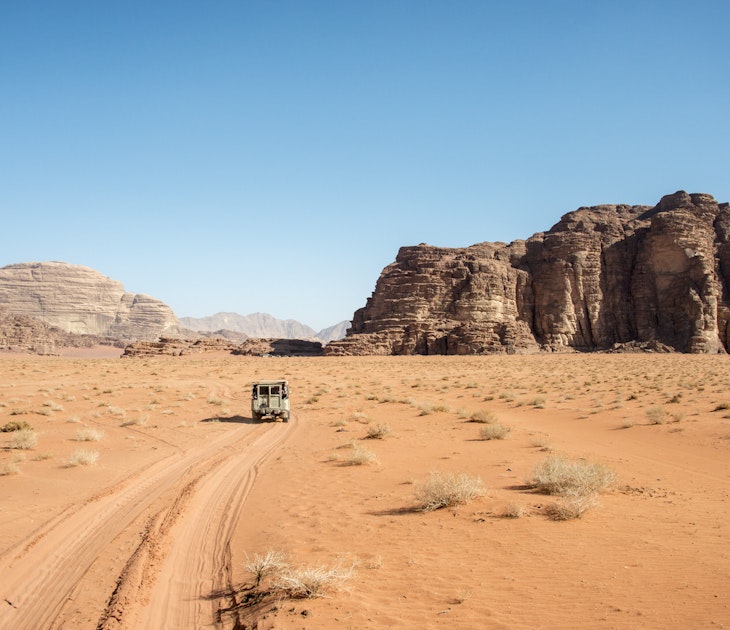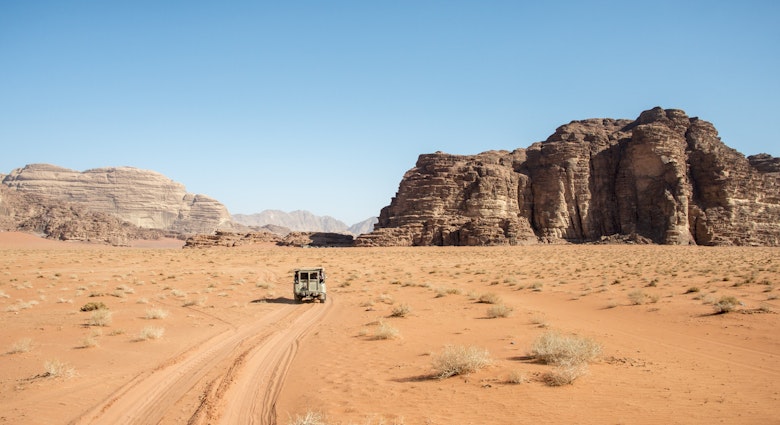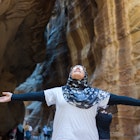Plonked between the copper-coloured rocks of the Negev desert and the rippling, luminescent corals of the Red Sea, Eilat occupies an enviable position on Israel’s southern tip. Understated this resort city is not, but those who dare to peel back its rough-and-ready shell will find a seaside city thronging with activity, including some of the best diving and snorkelling in the region.

At times, Eilat – a shipping port since the days of King Solomon, built into a city in the late 1950s – can seem loud, heaving with Israeli families who come seeking good-value beach breaks, tax-free shopping malls and fluorescent nightlife. But at others, it’s peaceful and chilled out, peppered with unexpected spots of bohemia that recall its 1970s days as a hippie hangout.
Bedouin attractions, hiking trails through the desert, world-class diving and a string of intriguing sights – from the Dead Sea to Petra across the border in Jordan – are all within easy reach. Warm temperatures throughout the year make it a good bet if you’re in need of some vitamin D come winter. A new international airport is set to open in 2018 – and more than 2000 soon-to-be-constructed hotel rooms will crop up on the site of the current one – meaning Eilat is about to have a second renaissance. If you prefer your landscapes empty, time may be of the essence.
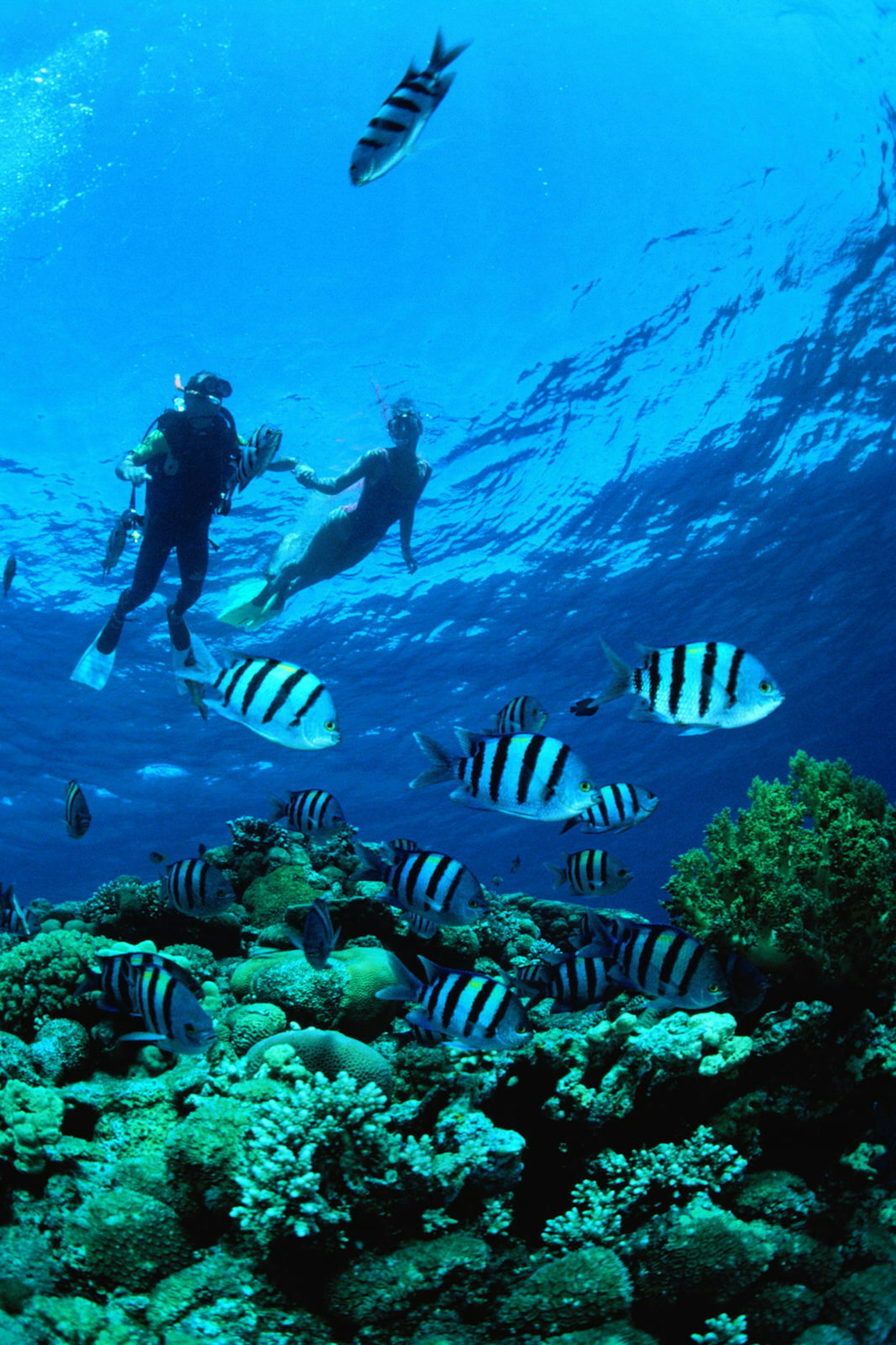
Dive in the Red Sea
Calm, temperate waters averaging 23°C make the Gulf of Eilat a mecca for snorkellers and divers year-round, with more than 2500 species – including parrotfish, butterflyfish, lionfish, turtles and occasionally whale sharks – colouring its shores.
You can get a good glimpse of them with a snorkel at Coral Beach Nature Reserve, home to a protected reef where brain-like clumps of coral in luminescent yellow, lime green and fuchsia form a trail you can follow along, but for a quieter and cheaper spot try Migdalor Beach. Located next to the Underwater Observatory, it’s a small, chilled-out enclave with a beachside cafe that’s more popular with locals than tourists. The underwater scenery is just as vibrant with schools of tiny fish glittering under the sun and exotic-looking flora swaying through cobalt water.
On the diving front, there’s plenty for both beginners and advanced divers, with companies scattered across the resort. Highlights include the exotic Japanese Gardens, located in the southern part of the reserve, and Satil, a navy missile shipwreck lying 24m below the surface of the sea.
Get an underwater massage at Stalbet Al Hamayim
An unusual experience can be found at Stalbet Al Hamayim (literally ‘Chilling On The Water’), a trio of indoor heated saltwater pools at Dolphin Reef, where laid-back types float around on jacuzzi-warm waters. Trendy daybeds, bamboo plants, a cocktail bar and wine on tap make this unquestionably cool, but the highlight is the underwater massage – a calming and sensual (if bizarre) experience where water therapists guide you round the water to soft, soothing music, teasing out muscle tension with gentle movements that leave you feeling distinctly serene.

Get lost in the desert around the Eilat Mountains
Caramel-coloured mountains plunging into dusty, empty valleys characterise the desertscapes surrounding Eilat, and you can find yourself in complete silence within 10 minutes of leaving the coast. Camel Ranch offer guided trips out at sunset to explore these molten formations from the back of a camel, while Jeep See Eilat take you out on fly-off-your-seat, wind-in-hair 4WD rides through the mountains towards a series of spectacular viewpoints overlooking the sea, with the lights of Jordan, Saudi Arabia and Egypt glimmering in the distance.

Hike through bizarre formations and prehistoric rock art
About 25km north of Eilat lies Timna Park, a 15,000-acre archaeological site where you can tour what’s considered to be the world’s oldest copper mine, believed to have its origins in the 10th century BC. About 10,000 mining holes remain today, along with prehistoric rock art carvings and unique formations such as Solomon’s Pillars – a row of towering red sandstone columns sprouting up from the ground – and mushroom rock, which looks like... well, you can probably guess. A series of well-mapped hiking trails is on hand to lead you through the Mars-like landscapes, and the park organises various events throughout the year, from lantern-lit night walks to music concerts and a selection of arts festivals.
Sample desert wines
Dusty, arid, water-scarce landscapes might not quite be what spring to mind when you think of vineyards, but the Negev desert is making a name for itself with its soft, low-acidity produce thanks to a wine route launched in the early '90s. Among its web of vineyards is the small, family-run Carmey Avdat Farm, set on the site of a winery dating back 1500 years, at a time when the stuff was exported to Rome. It’s one of the only farms in the world that still uses ancient irrigation terraces, producing white and reds including cabernet, sauvignon and merlot as well as kosher varieties, and guests can tour the bougainvillea-clad vineyard or stay on in one of six rooms to get a taste of Israel’s burgeoning agro-tourism scene.
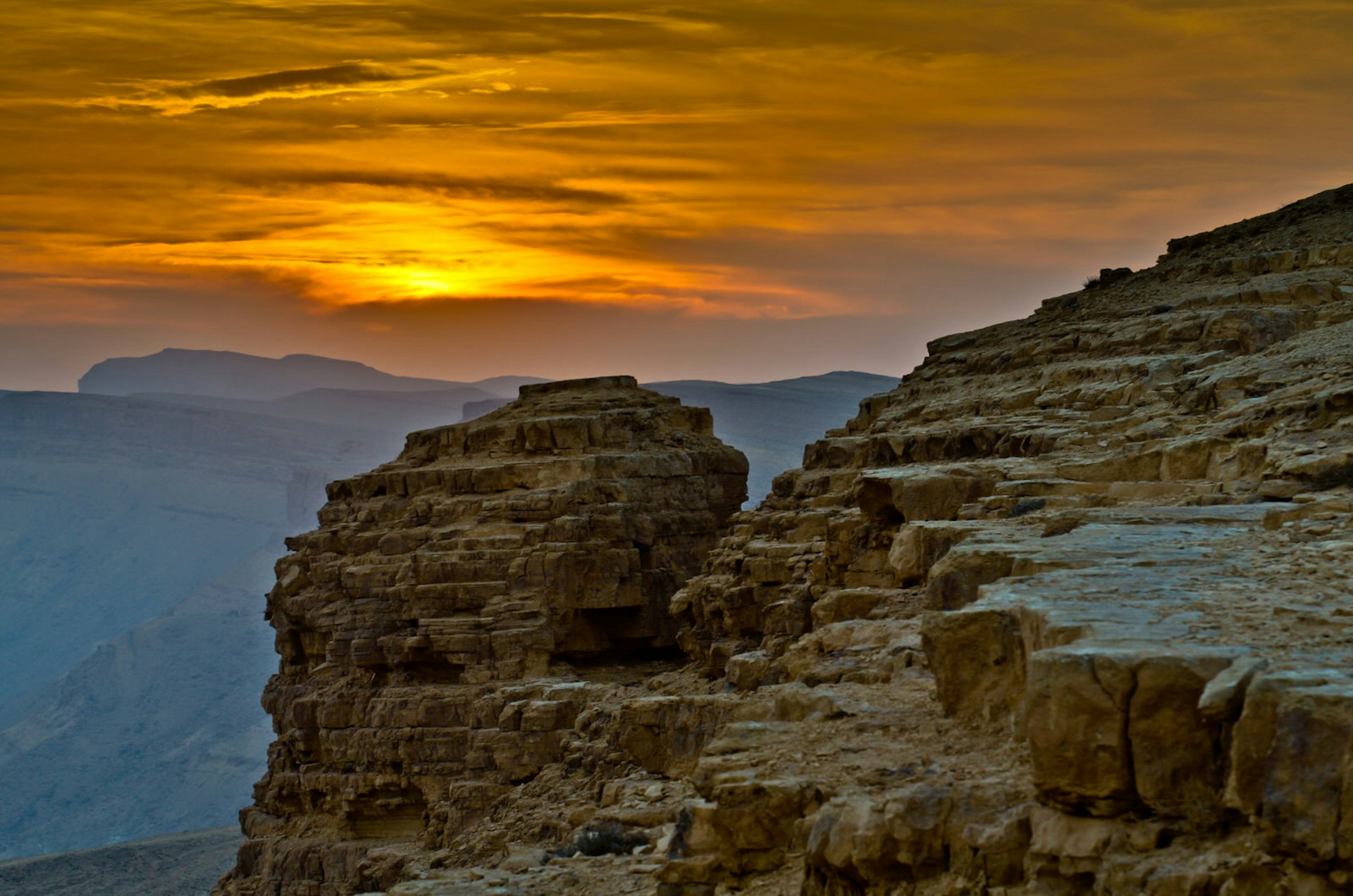
Stand on the edge of the Ramon Crater
Nearby lies the earth’s largest natural crater, the Ramon. This 400-million-year-old phenomenon has been dubbed the ‘Grand Canyon of Israel’, and it’s not hard to see why with its hefty scale (28 miles long, five miles wide) and vast blanket of gold, rocky desert stretching on into seeming infinity. Take a tour into its prodigious depths on horseback, foot, jeep or bike, or linger round the Makhtesh Ramon Visitor Centre at the top to view its nature-carved formations and sheer-drop edge from on high.
Experience the largest aquarium in the Middle East
Back in Eilat is the Coral World Underwater Observatory Marine Park, where a 360-degree observation chamber built into the sea offers spectacular views of the underwater universe and its peach-coloured, shredded-wheat style plantlife. It’s part of a wider aquarium complex set out like a mini theme park, home to turtle, stingray and shark pools alongside 40 fish tanks, a dark room filled with bioluminescent fish and an Oceanarium blasting out futuristic VR films.
Laura French travelled to Eilat with support from the Israel Government Tourist Office. Lonely Planet contributors do not accept freebies in exchange for positive coverage.

